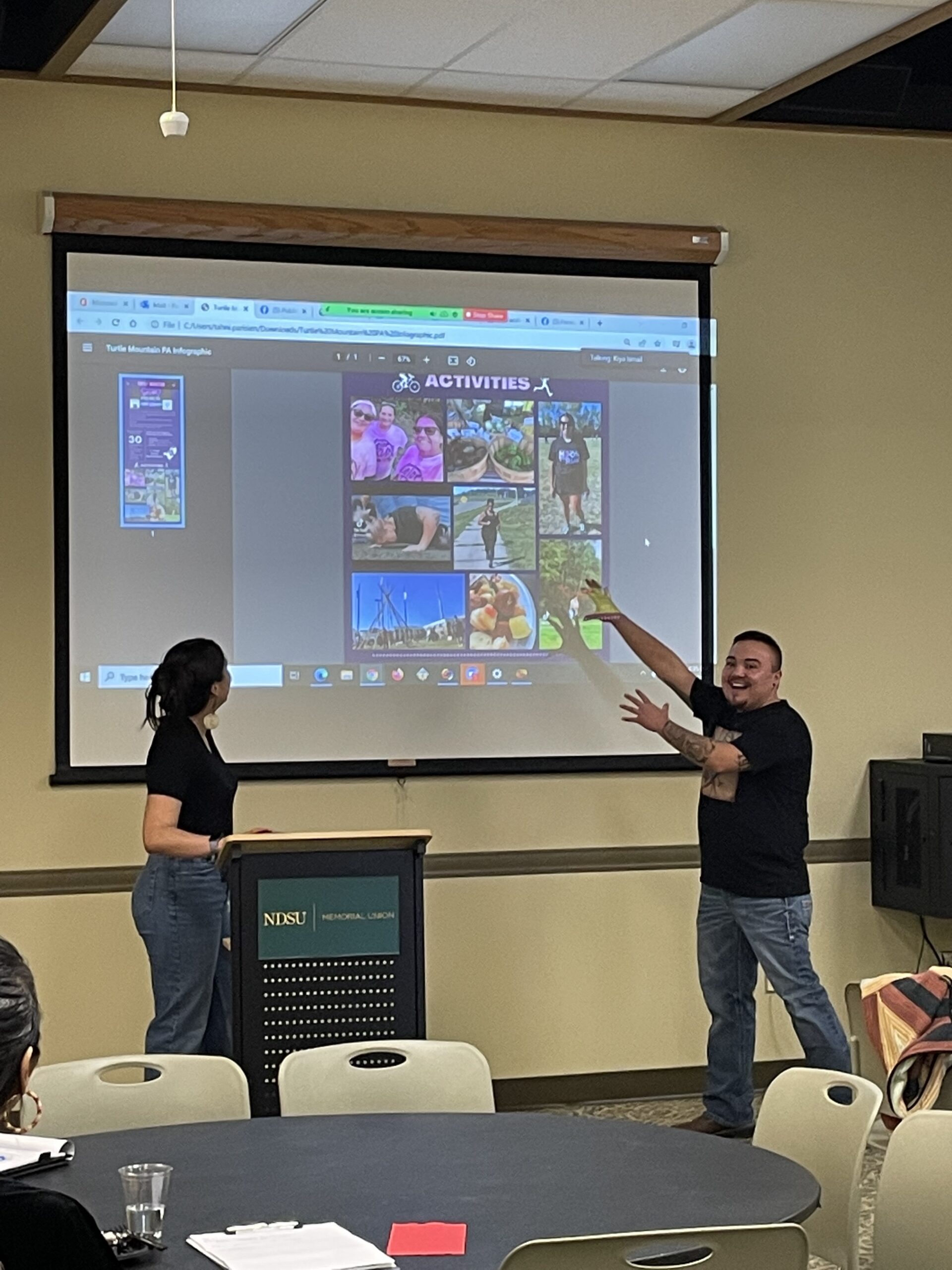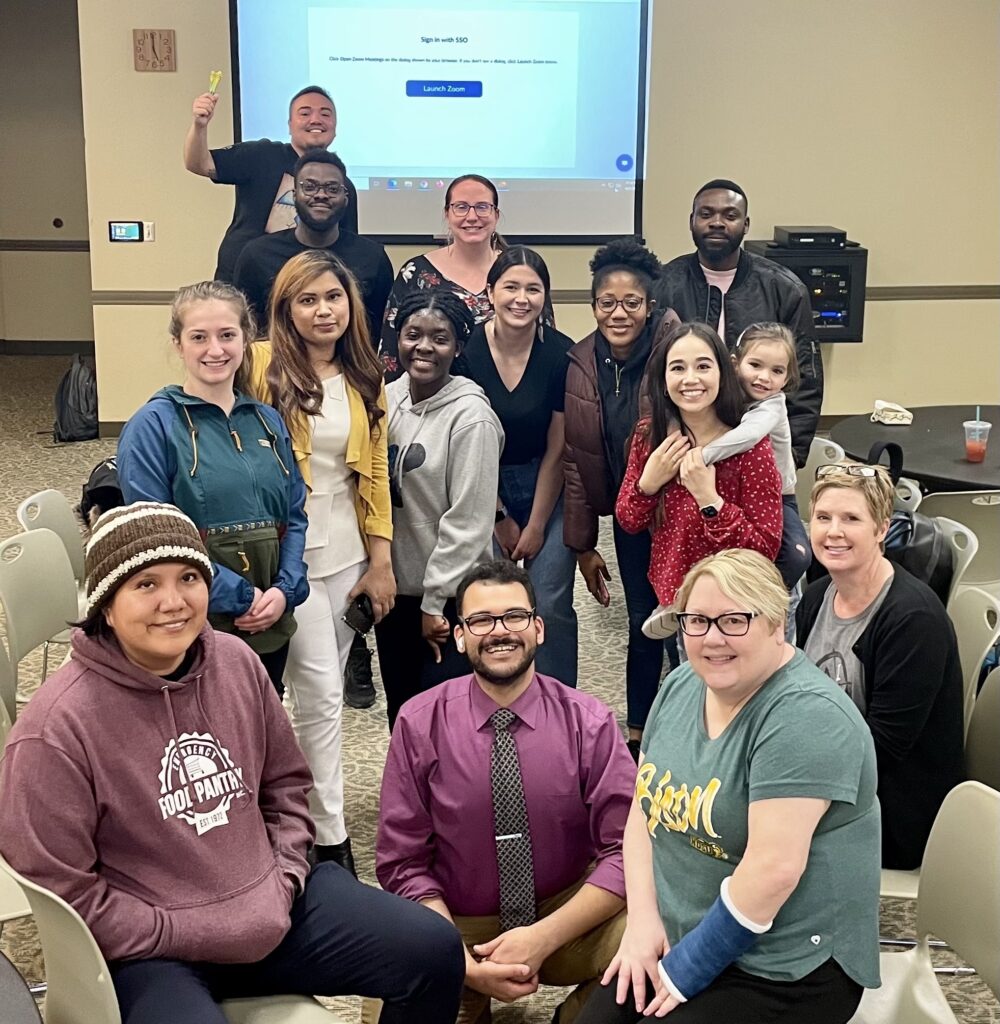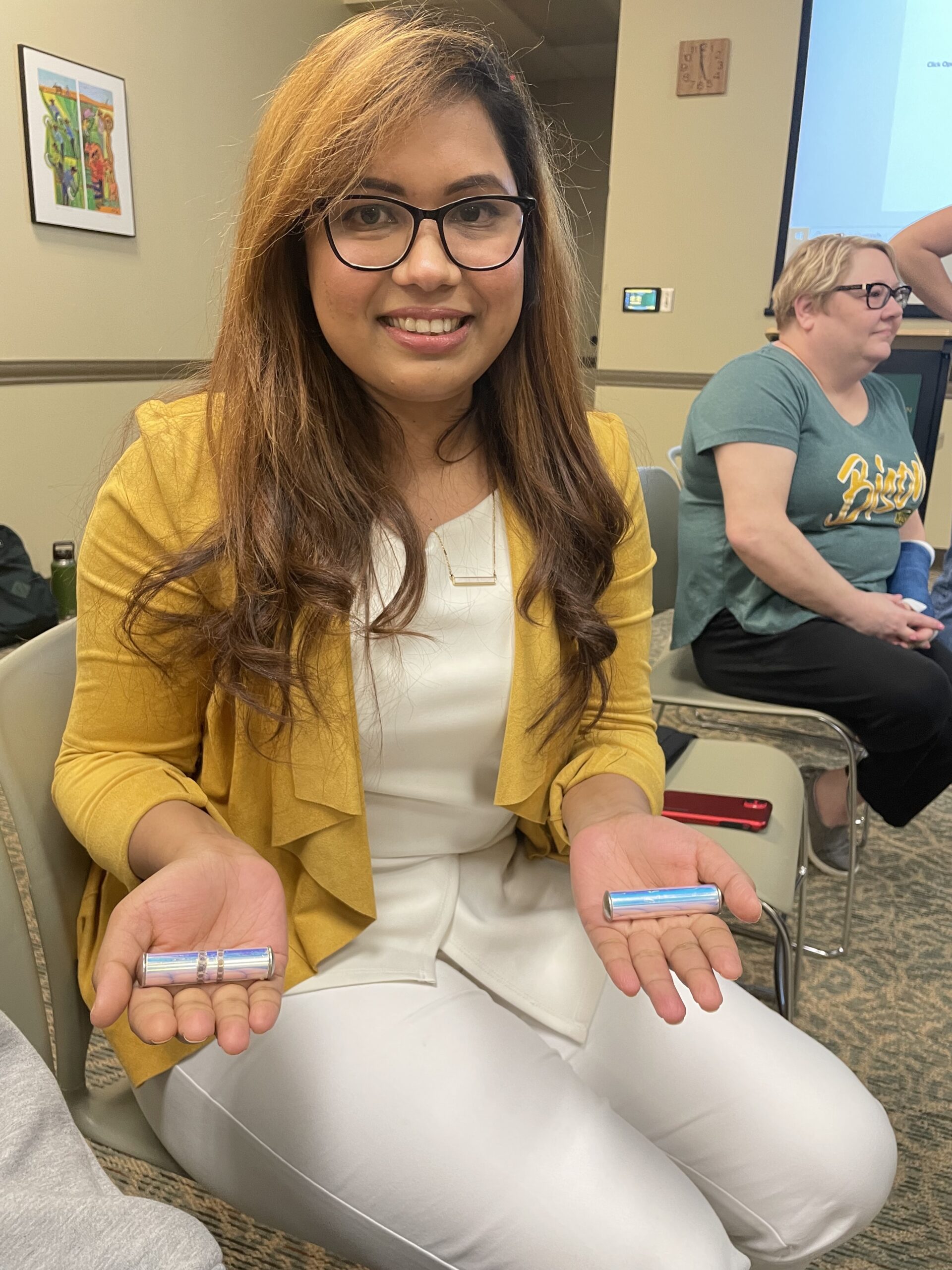Learn about the different topics discussed during NPHW event put on by NDSU Public Health Association

The NDSU Public Health Association held their first National Public Health Week (NPHW) event of the week on Monday, April 4. Masters of Public Health and Community Health Science students Mikalen Belgarde and Tahni Parisien presented information about the seven teachings, trauma, living a good life and resiliency in culture.
During the presentation, participants were served fry bread and Wojapi, engaged in questions about each of the subjects, and participated in a traditional hand game.
Community conversations for change
Belgarde and Parisien spent a good portion of the event talking about the Turtle Mountain Innovation Project’s Community for Change videos. Jacob Davis, a former alumnus of the MPH program who helped create these videos, was present via Zoom as well.
The videos shown during the presentation included the seven teachings (niswi), trauma (godwaaso) and resiliency in culture (niizhwaaso) and Mino Bimaadiziwin “living a good life.”
To view all eight videos, visit the Turtle Mountain Home Visiting Program Facebook page and the Turtle Mountain Healthy Living Coalition Facebook page and/or follow the links below:
According to Belgarde, American Indians and Alaskan Natives (Indigenous peoples) account for some of the highest rates of health disparities in the nation. This event sparked conversations that play a key role in building the framework for potential change for all tribal entities in North Dakota.
Systematic barriers prevent them from receiving care they were once promised. Belgarde explains that most reservations do not have trauma centers, treatment facilities, access to healthy foods, physical activity opportunities, secure housing, transportation, clean water or adequate infrastructure to accommodate for populations located on such minimal amounts of land.
According to Parisien, Indigenous history is not represented in western education systems and institutions — “and if it is, it does not reflect true history.”
“Most people do not know about the terrible experiences that Indigenous communities have faced due to colonization,” said Parisien. “NDSU students should care about Indigenous disparities because they go to a university that was built on Indigenous land that was taken away from L/D/Nakota and Anishinaabe tribes.”
One of their goals is to spread education and awareness to hopefully reach people who are uneducated about the history of Indigenous peoples.
“If you watch the news, you hardly see anything about Indigenous peoples. There are people who think they are extinct,” said Belgarde. “I think it all starts in the elementary school setting with teaching all children the true history that led to these health disparities. I say this because I have classmates who are graduate students, and they had no idea because the truth is not taught in most schools.”
Promoting education and awareness
Media platforms such as television, radio, social media, newspapers, billboards and infographics are tools that can help spread awareness and educate the people who may not be aware.
“We need representation from tribal communities to communicate these issues to find technical assistance to fill those gaps,” said Belgarde. “Culturally tailored approaches are proven to be more successful when reaching out to tribal communities for providing potential resources.”
The Indigenous community on campus continuously pushes for more representation on NDSU’s campus.
“We need to promote awareness of the NDSU Indigenous community for current students and future students who would like to attend NDSU,” said Belgarde. “Our population has reduced in size throughout the years and I think it is because we need more recruitment strategies that are going to invite more students to attend NDSU.”
Belgarde suggests implementing an Indigenous Center for students to help promote comfortability and representation on campus.
“I would want to see people who look just like me on campus to reduce the amount of culture shock. Coming from a rural community, that you’ve lived in all your life (knowing everyone) to a large city can be really hard on one’s mental health,” said Belgarde. “So, I think representation helps with creating a community for Indigenous students. I also believe that having an Indigenous Center for students would be an amazing contribution from NDSU to instill a safe space for that community to study, build relationships/social support, and carry on their culture while away from home.”
NDSU students can engage in their own education of the Indigenous culture by taking classes, joining clubs, attending events or even following different social media pages that are pushing for change.
“People can help educate and spread awareness by inviting Indigenous people to have a seat at the table, learning about history from Indigenous authors, take classes/training focusing on Indigenous history and experiences (taught by Indigenous people if possible), becoming an ally, supporting Indigenous voices,” Parisien said.

Photo Courtesy | NDSU Public Health Association.
Fry Bread and Wojapi connection
It’s a little controversial on whether or not fry bread is considered a traditional food, according to the students.
After Native Americans relocated to reservations, they were given rations and commodities from the military to survive. Those who lived on small amounts of land that weren’t farmable received small portions of food and had to make do with what they were given.
Fry bread is “unwholesome” but provides people with enough calories and nutrients to survive. However, this contributed to obesity, diabetes, intestinal distress and other health issues.
“I mean it wasn’t wholesome, it just provided enough nutrients to help people survive and calories to keep our bellies full, even though it wasn’t really what we were used to,” said Belgarde. “We were used to healthy things like plants and animals and living off the land.”
Belgarde went on to explain that foods that were forced into their diet contributed to gluten allergies and lactose intolerance because it wasn’t something they were used to.
The Wojapi, or the berry sauce, portion of the meal is considered very ceremonial.
“I did a Sun Dance a few years back and that is basically where you dance for three days and three nights and you can’t eat food or drink water,” said Parisien. “To break our fast, one of the things we ate was the berry sauce.”
The berries are added to all sorts of meals and recipes as they provide fiber, vitamins, minerals and phytochemicals.
Hand games
At the end of the presentation and discussion, the group came together and learned how to play traditional hand games.
According to the students, about 81 tribes and 28 different linguistic groups practiced the traditional hand games. These games are “competitive and fun” and can be played entirely by gesture, so they are language friendly.

Game pieces: 11 sticks used to keep score, and 4 round pieces of bone (or small stones) used to play the game. Two pieces of bone are plain and two are marked somehow to be dark — either wrapped with string or dyed or marked somehow.
The Play: Two sides. Each side has the same number of players, usually 4-8 people on each side. Each side is given 2 pieces of bone — one plain, one dark. Each side folds their hands into fists. Hidden inside a fist is one of the bones.
Object: To guess which bone piece is in which hand on the opposing team.
Game Play: By turns, one person from one team guesses what bones are where. If they are right, that team gets a stick. If they are wrong, the opposing team gets a stick. Then it’s the opposing team’s turn to guess. Men play against men. Women play against women.
The Prize: The winning team gets all the gifts brought by both sides. Each player has to put in one gift to play. Gifts might be a knife, a mat, a basket, a fishing spear — something of value.
“The biggest take away from today was seeing everyone in the audience and everyone on zoom who just showed up. My heart melted seeing my professors, my classmates, NDSU Students and Faculty, and everyone that filled the whole room. I thought to myself, ‘they support us. They want to listen to us. We matter. Our people MATTER.’ I was afraid and nervous because I had never presented in front of an audience so big,” said Belgarde. “Knowing that they were all there to support us, gave me the confidence to share the health disparities that the Turtle Mountain Band of Chippewa Indian reservation faces. I remember at one point my voice cracked speaking on one of the health disparities, and I looked up at Dr. Stefanie Meyer, she smiled and nodded her head to keep going. The atmosphere in the whole room was a safe space and I’ll never forget that.”
